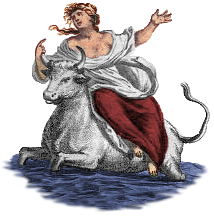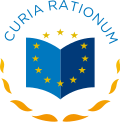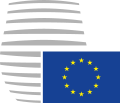Portal:European Union
Introduction
The European Union (EU) is a supranational political and economic union of 27 member states that are located primarily in Europe. The union has a total area of 4,233,255 km2 (1,634,469 sq mi) and an estimated population of over 449 million as of 2024. The EU is often described as a sui generis political entity combining the characteristics of both a federation and a confederation. Containing 5.5% of the world population in 2023, EU member states generated a nominal gross domestic product (GDP) of around €17.935 trillion in 2024, accounting for approximately one sixth of global economic output. Its cornerstone, the Customs Union, paved the way to establishing an internal single market based on standardised legal framework and legislation that applies in all member states in those matters, and only those matters, where the states have agreed to act as one. EU policies aim to ensure the free movement of people, goods, services and capital within the internal market; enact legislation in justice and home affairs; and maintain common policies on trade, agriculture, fisheries and regional development. Passport controls have been abolished for travel within the Schengen Area. The eurozone is a group composed of the 20 EU member states that have fully implemented the EU's economic and monetary union and use the euro currency. Through the Common Foreign and Security Policy, the union has developed a role in external relations and defence. It maintains permanent diplomatic missions throughout the world and represents itself at the United Nations, the World Trade Organization, the G7 and the G20. Due to its global influence, the European Union has been described by some scholars as an emerging superpower. In 2012, the EU was awarded the Nobel Peace Prize. In 2020, the United Kingdom became the only member state to leave the EU; ten countries are aspiring or negotiating to join it. (Full article...) Selected article The eurozone, officially euro area, refers to a currency union among the European Union member states that have adopted the euro as their sole official currency. The Eurosystem, headed by the European Central Bank, is responsible for monetary policy within the Eurozone. The Eurozone has 19 members, with a further six states and territories using it as their sole currency. It circulates widely beyond that, and has started to serve as a reserve currency. Based on official estimates of 2007 GDP, the Eurozone is the largest economy in the world. Selected picturePhotograph: Julian Herzog Christiansborg Palace is a building in the Danish capital, Copenhagen. It is the seat of the Danish Parliament, the Office of the Prime Minister, and the Supreme Court. The first castle on the site was Absalon's Castle, built in 1167 by the bishop Absalon and demolished in 1370, after King Valdemar was defeated by the Hanseatic League. By the end of the 14th century Copenhagen Castle was built on the site but that too was demolished in 1731. The first Christiansborg was then built, on the orders of King Christian VI, becoming the largest palace in northern Europe on its completion in 1745. It was destroyed in 1794 by fire, and replaced by the second Christiansborg. That too burned down in 1884, eventually being replaced by the current building, which was built between 1907 and 1928. The modern building is neo-Baroque in style, although the 19th-century neoclassical chapel and the original Baroque riding grounds remain, having survived the fires.
Did you know?...that the President of Ireland, who serves as head of state, is elected for a seven year term and can be re-elected only once? ...that within the Eurozone the European Central Bank has the exclusive authority to set monetary policy? Selected cityRome is the capital of Italy and of its region, called Lazio. It is located across the confluence of the Tiber and Aniene rivers. It was once the capital of the Roman Empire, the most powerful, largest and longest lasting empire of classical Western civilization. The Vatican, a sovereign enclave within Rome, is the seat of the Roman Catholic Church and the home of the Pope. Rome is the largest comune in Italy and it is also one of the largest European capital cities in land area, with an area of 1,285 square kilometers. Within the city limits, the population is about 2.5 million; almost 3.8 million live in the urbanised area of Rome, as represented by the province of Rome, making it second in population to Milan. With a gross domestic product of €97 billion in the year 2005, Rome produced 6.7% of Italy's GDP. General imagesThe following are images from various European Union-related articles on Wikipedia.
TopicsFeatured contentFeatured articles
Featured lists
Featured contentGood articles
CategoriesRelated portalsAssociated WikimediaThe following Wikimedia Foundation sister projects provide more on this subject:
Discover Wikipedia using portals |



































































